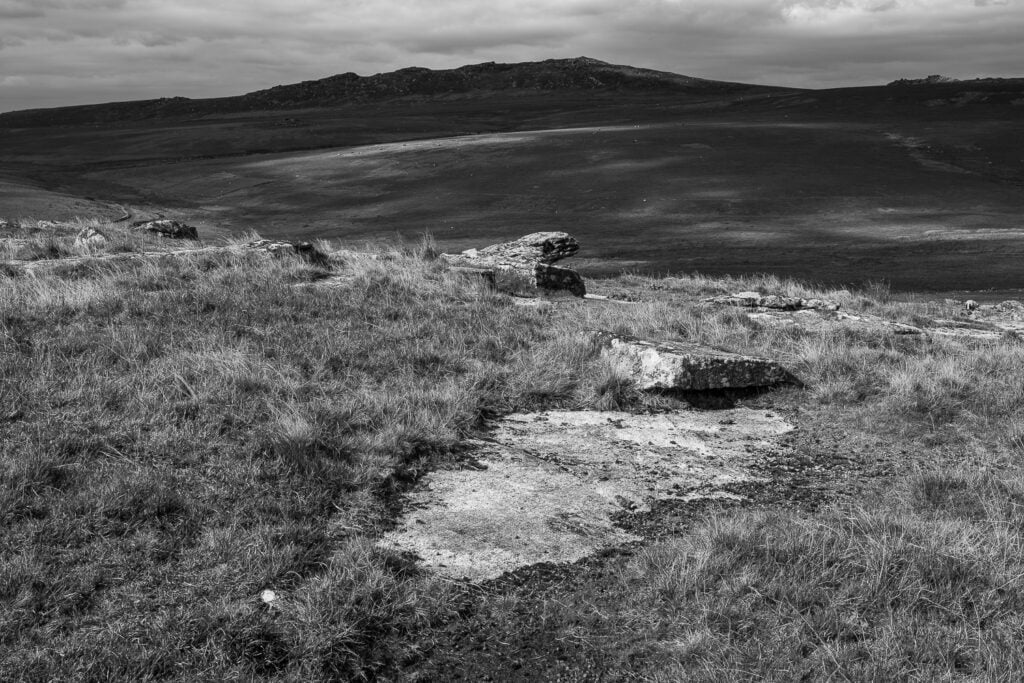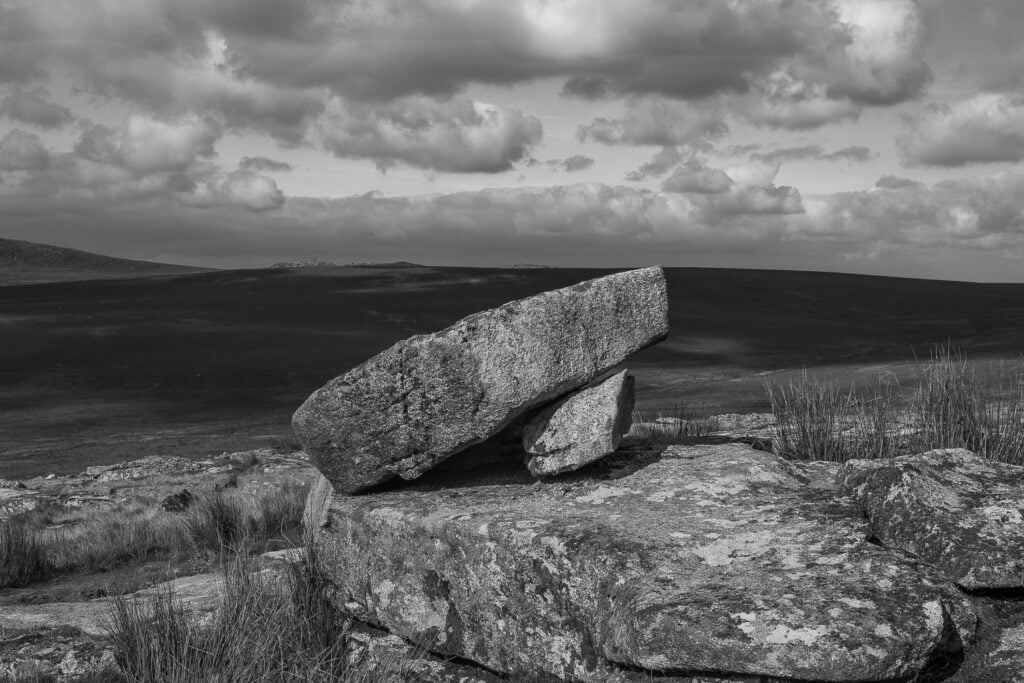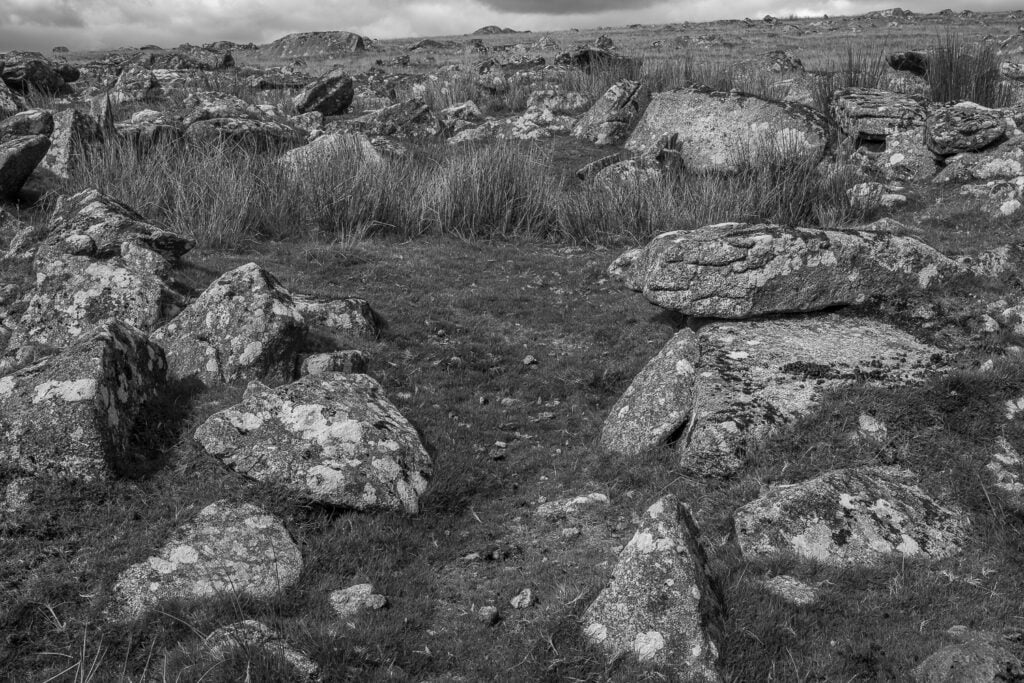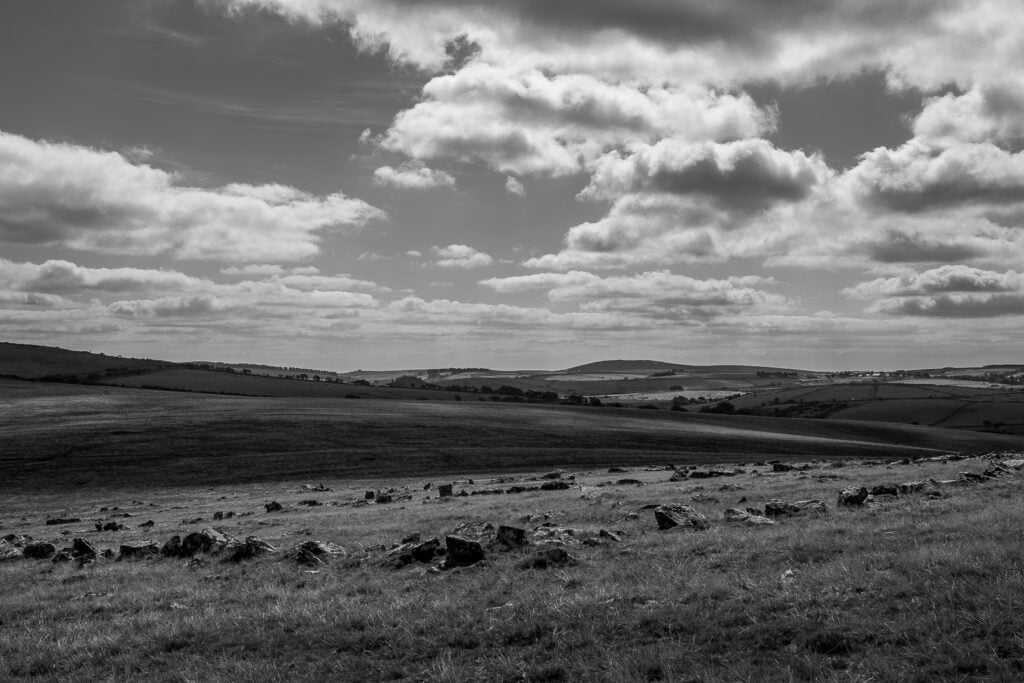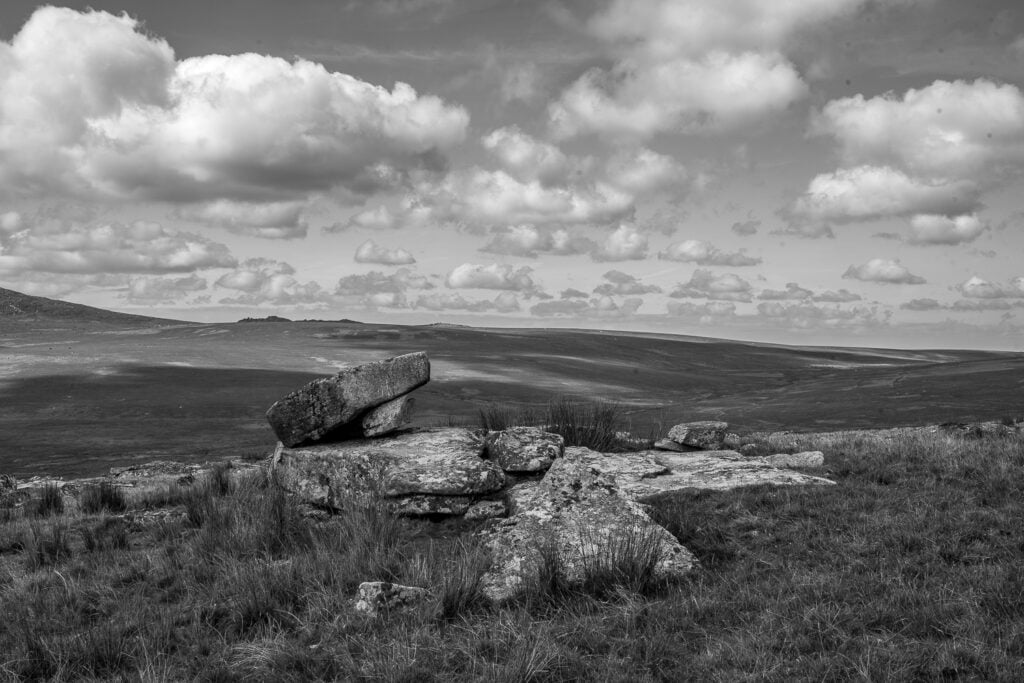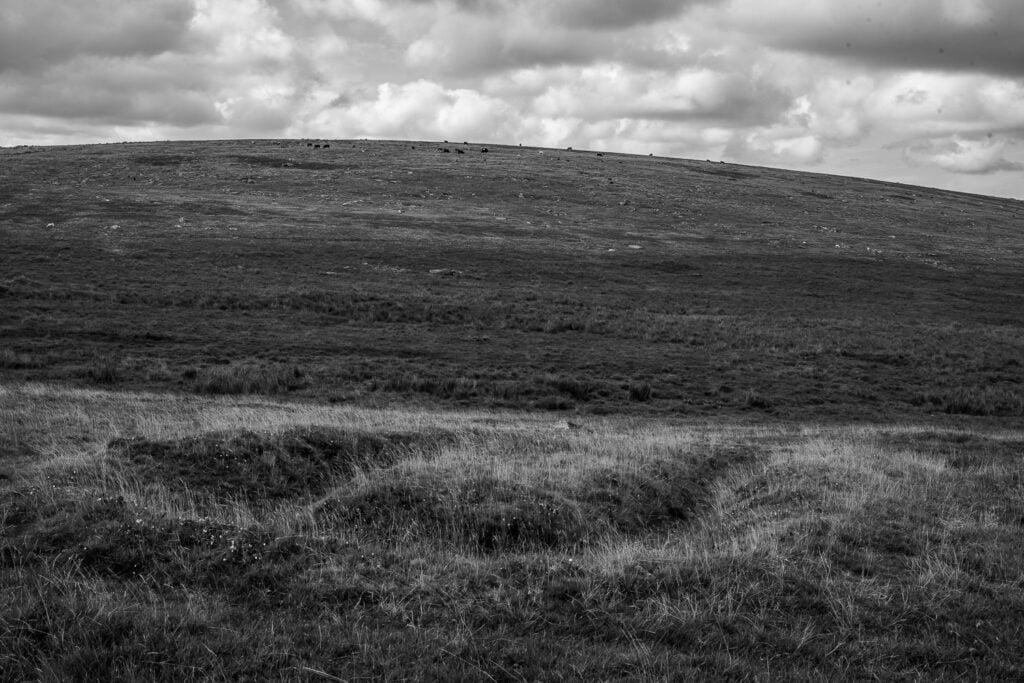Great Stone Project 2022 : Phenomenological Study of Leskernick Hill, Bodmin, 1995 -1999
The small hill of Lesternick is a relatively well preserved site of considerable Bronze Age occupation and remains. It’s claim to fame is that Christopher Tilley, archaeologist, developed his theories of phenomenology there over a series of summer excavations from 1995-1999. His, and his team’s aims, were described on the Lesterick website as :
The Leskernick Project is a multidisciplinary approach to landscape and the symbolism of place on Bodmin Moor, eastern Cornwall. It involves five related strands of research:
1 ARCHAEOLOGICAL EXCAVATION and SURFACE SURVEY of an exceptionally well preserved Bronze Age village complex, consisting of fifty houses in two settlement areas on the western and southern sides of Leskernick Hill with associated field walls, compounds, cairns, ceremonial structures and offering places in their wider landscape setting
2 GEOLOGICAL and ENVIRONMENTAL SURVEYS of the area
3 PRODUCTION OF INSTALLATION ARTWORKS in the landscape
4 ANTHROPOLOGICAL STUDY of the artificial community carrying out the research
5 EXPERIMENTATION with MODES of WRITTEN and VISUAL representation of place and landscape
https://www.ucl.ac.uk/leskernick/intro1.htm
This immersive approach was unusual in Archaeological study within a science which had long been less imaginative and intuitive, and it helped to develop a ‘post processual’ style of interpreting ‘material culture’ found at excavation. This development helps me personally to understand more fully the approach that Spanish archaeologist Alfredo Gonzalez-Ruibal adopted on the International Brigades’ Conflict excavation I joined at Belchite, Zaragoza, northern Spain.
Following that excavation I wrote that :
‘Archaeology has become a broad empathic science, scrubbing away its traditional hoary skin of accumulating artefacts like magpies collecting shiny objects, to become an all-encompassing humanistic ensemble of cultural assessment, imagination and projection. Alfredo himself discusses the concept of anamnesis, which he describes as an inner knowledge of things which we do not know we have; a knowledge base which is instinctive, accumulative and develops into a form of higher empathy where artefacts found convey an emotional story-board of an individual’s ( and his/her society’s ) inner constructs. He describes being able to use this accumulation of knowledge to sense the emotionality of the person whose possessions have been found and to further understand the liminal environments explored; almost like finding and understanding strands of DNA.
It would seem that at least some of Alfredo’s approach has been influenced by Christopher Tilley’s developments.
The Leckernick Hill website ( see link above ) is enjoyable to browse; covering the stones with sheeting and then painting them, introducing furniture to the remains of Bronze Age houses, making cut outs of door and window frames to encourage greater understanding of environmental factors, such as views across to the major adjacent tors, helped engender more informed considerations about the lifestyle and belief systems, as well as social factors, of those ancient people. Also, reading the integrated anthropological study where the team of archaeologists wrote down their feelings about the dig and about each other was riotous and revelatory. It is fair to say Christopher Tilley’s novel approach was divisive.
The photographs below are of Leskernick Hill and some of its stones and ancient houses taken several months ago in late September. I camped several miles away and spent several hours on my 3rd day on the Hill; although relatively small it really is quite isolated, and that isolation became a creeping reality as I wondered around the stones in just several hours. The major crag of Brown Willy which forms the background of 3 of the images below was really a powerful and intoxicating feature of the landscape, repeatedly going in and out of shadow as clouds raced across the sky. Tilley suggested that living within that isolation, the sweeping landscape and the effect of recurrent sunlight and shade within a sparse stone environment might have had trance inducing qualities.
Just being there for several hours was a powerful experience. Relating my small experience to that of the archaeologists who worked there for days at a time increased that immersive experience.
